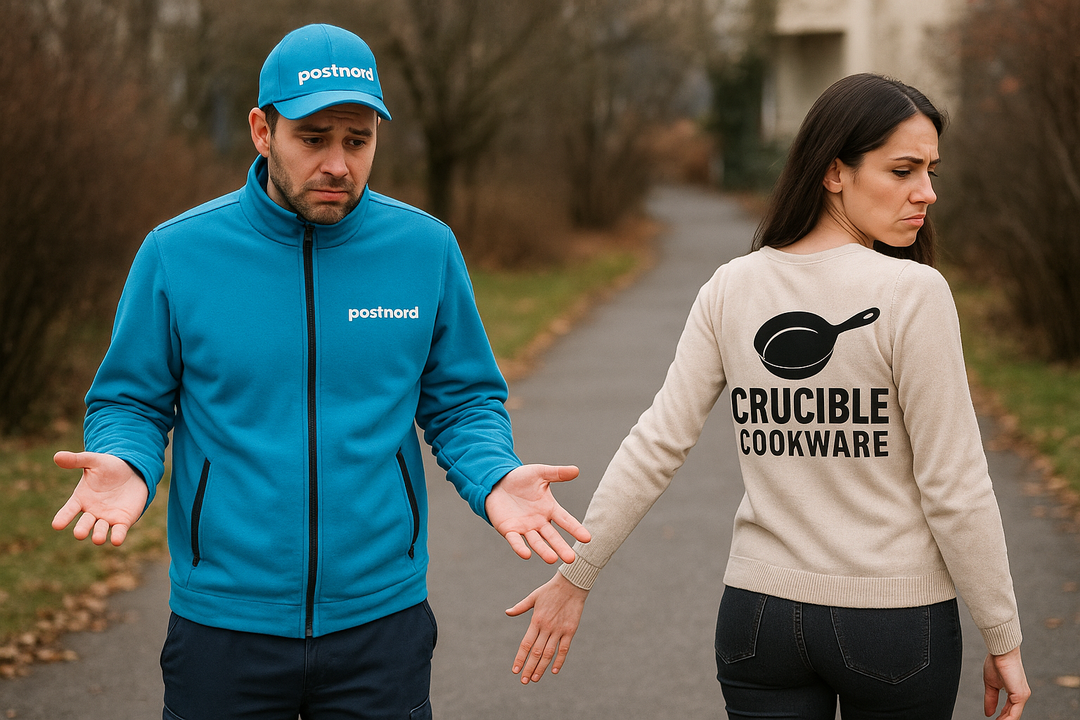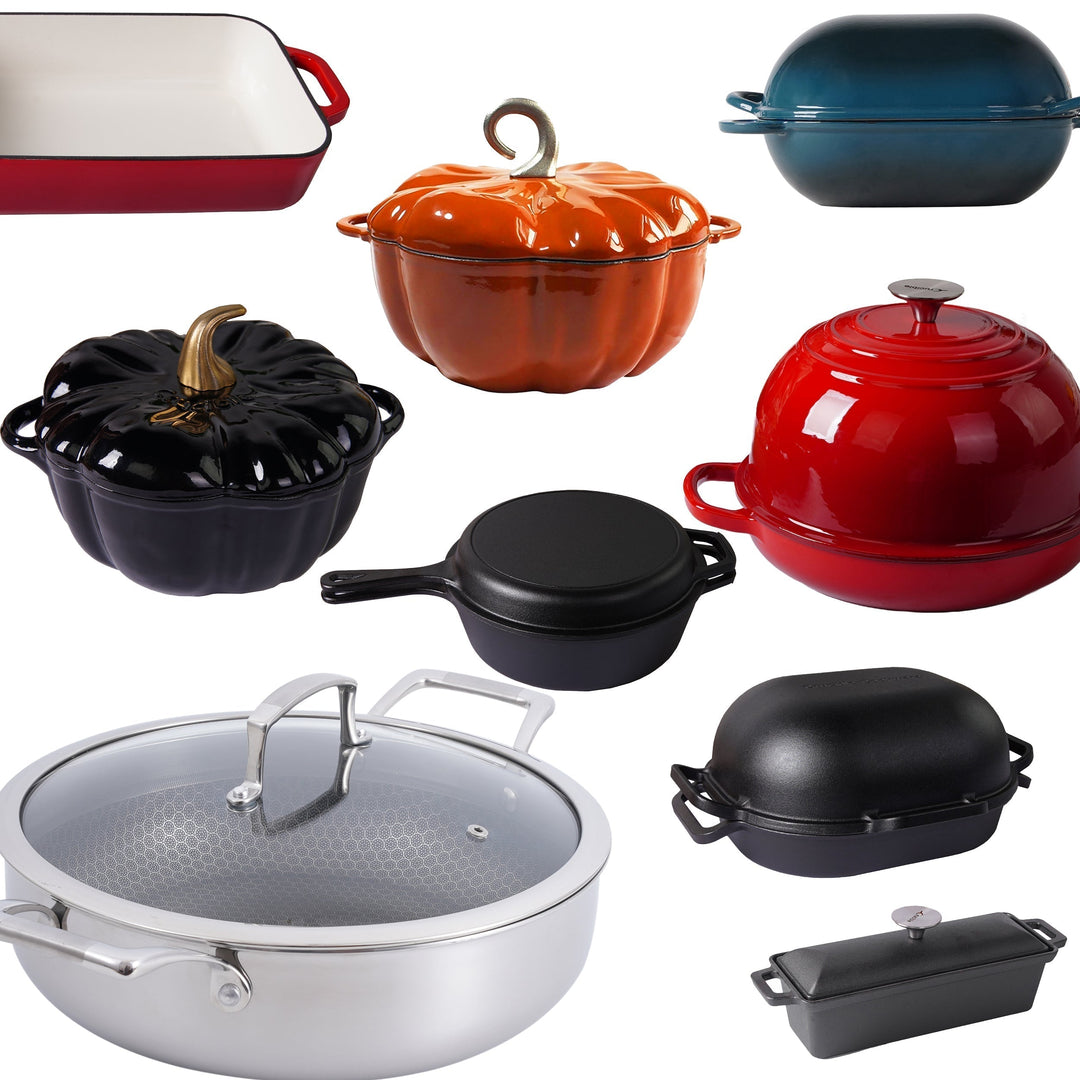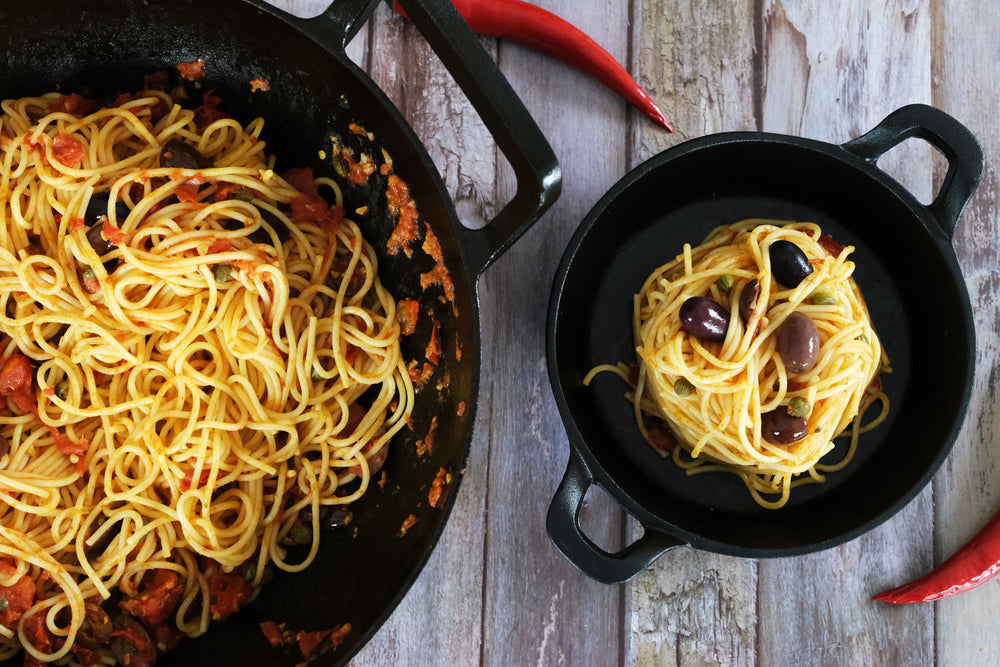The History of Cast Iron Baking: From Hearth to Modern Kitchen

Cast iron has been part of human cooking history for centuries—shaping the way we prepare, bake, and enjoy food. While its role in frying and stewing is well known, cast iron has also been a trusted partner for bakers, from ancient hearths to today’s sleek home kitchens. This is the story of how cast iron baking has evolved over time.
From Clay to Iron: The Early Days of Bakeware
Before iron, most ancient societies baked in clay or stone vessels heated in communal ovens. In China, as early as the 5th century BCE, iron casting techniques emerged, and cookware began to shift from fragile earthenware to more durable metal. By the late Middle Ages in Europe, blacksmiths were producing heavy iron pots that could withstand both open fires and glowing embers.
These early cast iron vessels weren’t specialized bakeware—they were multipurpose cauldrons and pots. But bakers quickly discovered their ability to trap and radiate heat evenly, making them perfect for rustic breads, pies, and puddings.
The Hearth Era: Dutch Ovens and Lid Skillets
By the 17th century, the Dutch oven became the star of cast iron baking. Its tight-fitting lid and thick walls acted like a mini-oven within the open hearth. Cooks could pile hot embers both under and on top, creating consistent heat for baking loaves, roasting meats, and even cooking delicate cakes.
In colonial America, these ovens were indispensable. A family’s Dutch oven could bake everything from sourdough boules to cornbread, cobblers, and biscuits—without the need for a brick oven. Lid skillets and griddles followed, perfect for hearth-baked flatbreads and pancakes.

Industrial Revolution: Cast Iron for Every Kitchen
The 18th and 19th centuries brought major changes. Mass iron casting made cookware more affordable, and as home stoves replaced open hearths, cast iron adapted beautifully. Flat-bottom skillets, cake pans, and bread molds became common.
Baking in cast iron wasn’t just practical—it became part of culinary culture. Southern cornbread, Midwestern skillet pies, and farmhouse griddle cakes all relied on cast iron’s even heat and naturally nonstick, well-seasoned surface.
The 20th Century Dip—and Revival
By the mid-1900s, lightweight aluminum, stainless steel, and nonstick pans began to dominate kitchens. Cast iron, seen as old-fashioned and heavy, lost popularity—especially for baking. But it never disappeared. In rural kitchens and camping gear, it remained a staple.
In the late 20th century, cast iron experienced a revival, thanks to a growing interest in heritage cooking, sustainability, and durable, chemical-free cookware. Bakers rediscovered that nothing quite matches the crusty, golden results of bread baked in cast iron. Artisan bread movements and the popularity of no-knead recipes brought the Dutch oven back into the limelight.

Cast Iron Baking in the Modern Kitchen
Today, cast iron baking is more versatile than ever. You’ll find:
-
Dutch ovens turning out bakery-quality sourdough with perfect crust.
-
Cast Iron Skillets producing deep-dish pizzas, brownies, and skillet cookies.
-
Baking pans for cornbread, muffins, and pound cakes.
-
Enameled cast iron cookware adding beauty and ease of cleaning.
Home bakers now pair centuries-old techniques with modern innovations—using digital thermometers, convection ovens, and precise hydration measurements, while still relying on cast iron’s timeless heat-retaining magic.

A Tradition Worth Keeping Warm
The history of cast iron baking is the history of practical, flavorful, and resilient cooking. From humble hearths to Instagram-worthy loaves, it’s a reminder that the best kitchen tools don’t just follow trends—they endure, season after season, generation after generation.
So next time you slide a loaf into your Dutch oven or pour cake batter into your skillet, you’re not just baking—you’re continuing a tradition that’s been rising for hundreds of years.
















Deixe um comentário